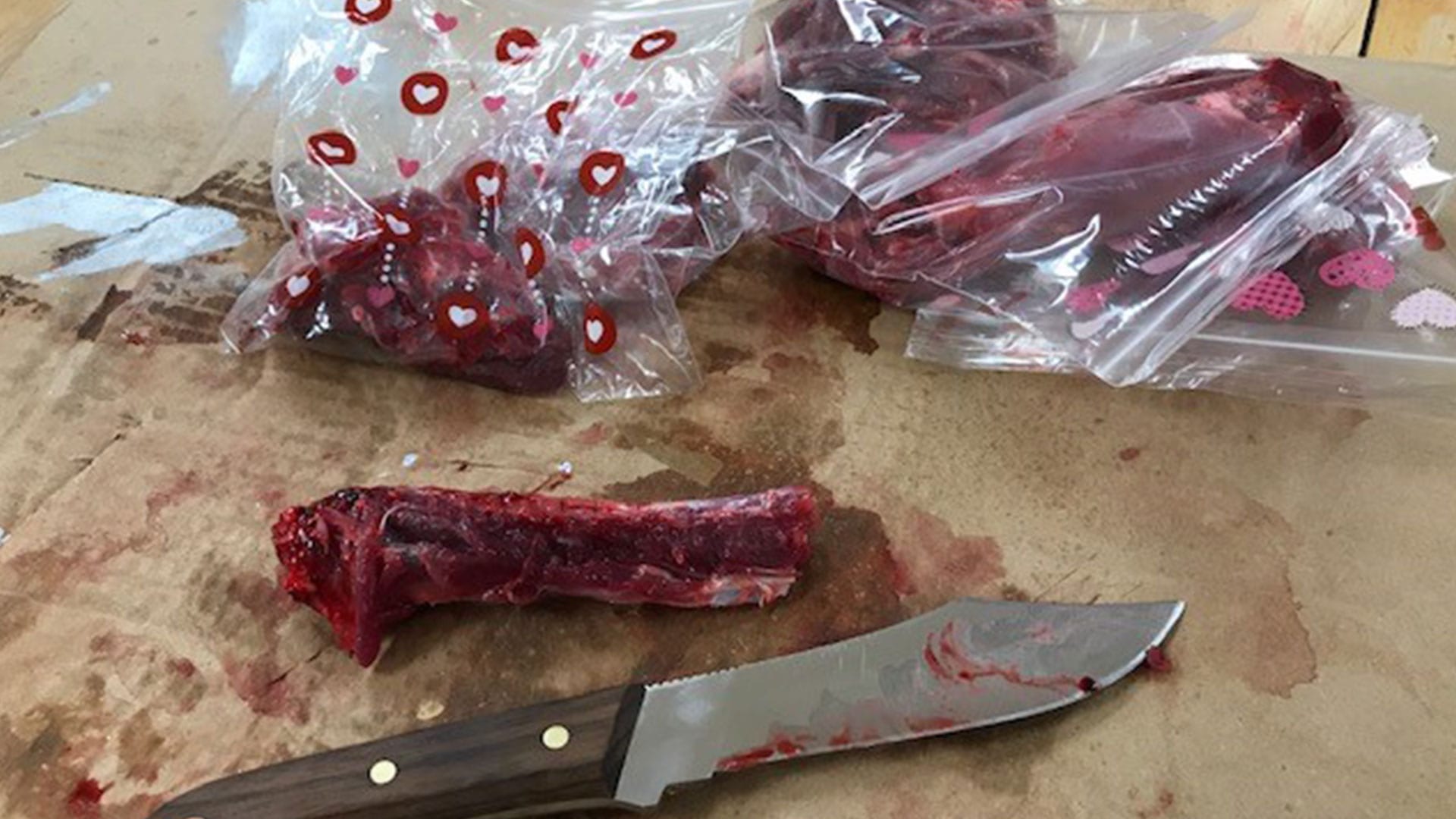The fur is cut around the ankles, and with a pull from both ends, it comes off like pulling off a wetsuit.
“It felt kind of weird, but it’s I don’t know, how Mi’kmaw did it, people did it before,” says Grade 6 student Fiercen White.
The class is learning firsthand traditional knowledge, the Mi’kmaq way.
It is part of the Mi’kmaq language class at L’nu Sipuk Kina’muokuom (House of Learning), called LSK for short, has about 200 students from Kindergarten to grade 12.
The class combines outdoor education and language.
Greg Marr, instructor of the Mi’kmaq language class at the school in Sipekne’katik First Nation, said it is more than learning the Mi’kmaw language.
“I wanted to find meaningful ways in order to teach our children about the language but at the same time, retain some sort of their culture and their identity while having fun of course,” said Marr.
Educational assistant Jon Michael shares his teachings, how to clean the rabbit and cut the meat to prepare for rabbit stew.
“When I was growing up my dad taught me this, and he said if you can learn how to do this here, you’ll never starve and one of the things I remember too, it teaches a lot, it teaches with respect how we’re connected to mother earth,” said Michael.

Traditional culture and identity are also part of the teachings.
Marr said this knowledge came far too close to being lost.
“So, when different things like Indian residential school came and colonization took place it’s kind of displaced our traditional lands so all of our culture, all of our traditions they went underground, and a lot of the sacred teachings were lost,” said Marr.
But now, those teachings are in the classroom.
Students made a traditional snare to catch the rabbit, and an elder offered tobacco in thanks for the rabbit giving its life.
“To kind of close the gap of colonization so we are looking for meaningful ways to decolonize our way of learning and to give back their teachings,” said Marr.
For the next project, the students will learn how to make lobster traps, to donate to the community’s lobster harvesters.









